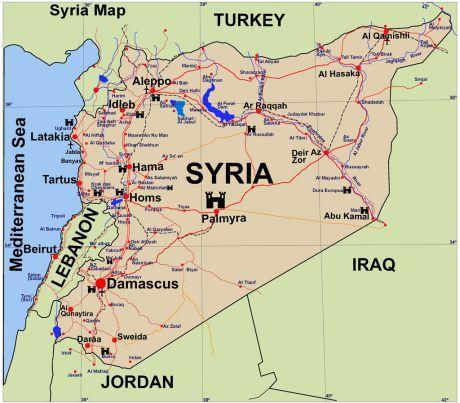News
You are here
Revolution and counter-revolution under the Syrian "peace plan"

April 19, 2012
Despite imperial attempts to hijack it or stop it, the revolution in Syria is continuing.
For more than 13 months the people of Syria have been rising up against the repressive and neoliberal regime of Bashar Al-Assad, as part of the Arab Spring. Despite a brutal crackdown that has killed thousands—including prolonged shelling of Homs—the revolution has spread across the country and caused splits in the army.
The dictatorship of Bashar Al-Assad has opened up Syria to Western corporations (like Canada’s SNC-Lavalin, which has a contract to build a pipeline taking Iraqi oil through Syria to the Mediterranean) and tortured victims of the “war on terror” (like Canada’s Maher Arar), but it has partially supported resistance movements in the region. As a result, the West has long wanted “regime change” in Syria to impose a more compliant regime and to confront Iran.
Shaken by the Arab Spring, the West is trying to regain control by hijacking the revolution in Libya and now Syria—using Saudi Arabia to arm sections of the Free Syrian Army, trying to impose the “Syrian National Council” (made of pro-West exiles) as the leadership, and using the “Friends of Syria” group to push for war.
But the US establishment is divided. “Humanitarian intervention” in Libya avoided quagmires like in Afghanistan and Iraq and installed the pro-West National Transitional Council stacked with former Gaddafi figures, but without troops on the ground the NTC is losing control. The oil-rich eastern province of Cyrenaica declared autonomy, while the military commander in Tripoli who helped overthrow Gaddafi is suing former British Foreign Secretary Jack Straw for sending him to be tortured by Gaddafi in 2004.
Meanwhile, imperial rivals China and Russia (which has a naval base in the Syrian port of Tartus) have been supporting the Syrian regime and vetoing UN sanctions. As a result, the UN “peace plan” reflects the opposing imperial drives: it keeps Assad in power, pleasing Russia and China, and if it falls apart the West can use it as an excuse for war.
Revolution: the real peace plan
Within Syria, the “peace plan” is inherently unstable. Revolutionary forces used the cease-fire to promote widespread rallies. The Local Coordinating Committees, the heart of the revolution over which no imperial powers have control, called for Friday rallies that spread to 771 neighbourhoods, towns and cities, including Aleppo and Damascus. In response, Assad broke the cease-fire with more shelling.
There can be no peace in Syria until the revolution overthrows the Assad regime, which will require following the Tunisian and Egyptian examples of combining mass demonstrations with mass strikes. The ongoing Egyptian revolution can shape these developments regionally, while internationally we must stop our own governments from hijacking the revolution with arms sales or “humanitarian intervention.”
Section:
Topics:
- Log in to post comments










